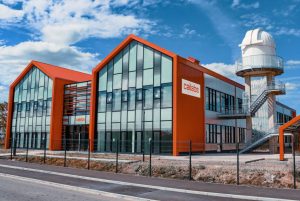Laser Beam Welding of different materials improved thanks to tailored beam shaping with Multi-Plane Light Conversion
ILAS 2023
Avinash Kumar1, Matthieu Meunier1, Adeline Orieux1, Nicolas Gaillard2, David Lemaitre2, Gwenn Pallier1,Guillaume Labroille1
1- Cailabs, Rennes, FRANCE
2- Institut Maupertuis, Bruz, FRANCE
Abstract
Laser Beam Welding (LBW) is widespread among most sectors such as naval or automotive industries. The development of LBW processes is driven by very different challenges depending on the material to weld. We describe in this paper three different strategies in order to improve LBW of Aluminum, Copper and Stainless steel.
Firstly we will focus on Aluminum and Copper welding thanks to multiple C-Dot beam shapers for the e-mobility application. Indeed, copper is a very difficult material to weld due to its low absorption and high conductivity, whereas Aluminum is difficult to weld due to its high ductility. We demonstrate how an optimal beam shaping enables high speed and high quality welding. An intense primary beam initiates the keyhole while an outer ring stabilizes the welding bead. The beam shaping parameters are explored and optimized and the optical performance is assessed. The process window is described for four sets of shape parameters as well as the comparison with an unshaped beam. The quality in each cases for different speed and average power will be discussed.
Secondly we will address stainless steel welding challenges thanks to a ring shape for industrial applications, including gap-welding, thicker parts welding, and Hybrid Laser-Arc Welding (HLAW). A MPLC-based laser head has been developed providing a 800µm diameter annular shape. The large diameter of the ring stabilizes the keyhole even at high power, and the optimal cooling ensure a reduced focus shift. LBW of 304L stainless steel 6mm thick plates at 7kW at 1m/min is demonstrated. The extended depth of field is described leading to a more robust process. Moreover, HLAW of steel at 16kW is demonstrated too with a penetration depth of 23mm. The combination of Arc Welding with a high-power laser shaped in a large ring improves butt-joint configuration welding with gap.
